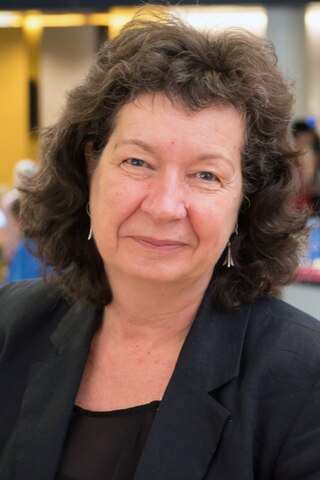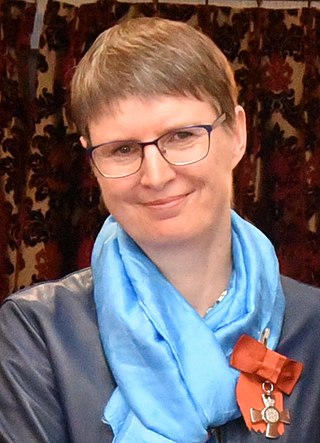
The University of Canterbury (UC) is a public research university based in Christchurch, New Zealand. It was founded in 1873 as Canterbury College, the first constituent college of the University of New Zealand. It is New Zealand's second-oldest university, after the University of Otago, which was founded four years earlier, in 1869.

Lincoln University is a New Zealand university that was formed in 1990 when Lincoln College, Canterbury was made independent of the University of Canterbury. Founded in 1878, it is the oldest agricultural teaching institution in the Southern Hemisphere. It remains the smallest university in New Zealand and one of the eight public universities. The campus is situated on 50 ha of land located about 15 km (9 mi) outside the city of Christchurch, in Lincoln, Canterbury.

Christchurch is the largest city in the South Island of New Zealand and the seat of the Canterbury Region. Christchurch lies on the South Island's east coast, just north of Banks Peninsula on Pegasus Bay. The Avon River / Ōtākaro flows through the centre of the city, with an urban park along its banks. The city's territorial authority population is 389,300 people, and includes a number of smaller urban areas as well as rural areas. The population of the urban area is 377,900 people. Christchurch is the second-largest city by urban area population in New Zealand, after Auckland. It is the major urban area of an emerging sub-region known as Greater Christchurch. Notable smaller urban areas within this sub-region include Rangiora and Kaiapoi in Waimakariri District, north of the Waimakariri River, and Rolleston and Lincoln in Selwyn District to the south.

Christchurch Girls' High School in Christchurch, New Zealand, was established in 1877 and is the second oldest girls-only secondary school in the country, after Otago Girls' High School.

The Royal Society Te Apārangi is an independent, statutory not-for-profit body in New Zealand providing funding and policy advice in the fields of sciences and the humanities.

Beckenham is an inner suburb of Christchurch, New Zealand, located three kilometres south of the city centre. The Ōpāwaho / Heathcote River winds through this predominantly residential suburb, a section of which is often referred to locally as the "Beckenham Loop". Beckenham is bounded by Sydenham to the north, Somerfield to the west, Cashmere and Huntsbury to the south and St Martins to the east.

Sir Stephen Gerard "Tipene" O'Regan is a New Zealand academic and company director.

Christchurch Hospital is the largest tertiary hospital in the South Island of New Zealand. The public hospital is in the centre of Christchurch city, on the edge of Hagley Park, and serves the wider Canterbury region. The Canterbury District Health Board (CDHB) operates the hospital with funding from the government.

Helen Connon was an educational pioneer from Christchurch, New Zealand. She was the first woman in the British Empire to receive a university degree with honours.

Christine Coe Winterbourn is a New Zealand biochemist. She is a professor of pathology at the University of Otago, Christchurch. Her research in the biological chemistry of free radicals earned her the 2011 Rutherford Medal and the Marsden Medal, the top awards from each of New Zealand's two top science bodies.

Jonathan Ngarimu Mane-Wheoki was a New Zealand art historian, academic, and curator. Of Ngāpuhi, Te Aupōuri, Ngāti Kurī and English descent, he was a pioneer in the study of contemporary Māori and Pacific art history.

Wendy Alison Nelson is a New Zealand marine scientist and world expert in phycology. She is New Zealand's leading authority on seaweeds. Nelson is particularly interested in the biosystematics of seaweeds/macroalgae of New Zealand, with research on floristics, evolution and phylogeny, as well as ecology, and life history studies of marine algae. Recently she has worked on the systematics and biology of red algae including coralline algae, distribution and diversity of seaweeds in harbours and soft sediment habitats, and seaweeds of the Ross Sea and Balleny Islands.

Wendy Larner is a New Zealand social scientist who has focussed on the interdisciplinary areas of globalisation, governance and gender. She is currently Provost at Victoria University, Wellington, New Zealand. From the 1st of September 2023, she will be Vice-Chancellor and President of Cardiff University.
Alison Marion Cree is a New Zealand herpetologist. She is currently a professor at Otago University.

Dame Carolyn Waugh Burns is a New Zealand ecologist specialising in lakes. She is an emeritus professor at the University of Otago.
Karen Nadine Scott is a New Zealand Law academic. She is a full professor at the University of Canterbury. She was elected President of the Australian and New Zealand Society of International Law in June 2019.

Sally Anne Brooker is a New Zealand inorganic chemist. She has been a full professor at the University of Otago since 2006.

Tūranga is the largest public library located in Central Christchurch, New Zealand. It opened on 12 October 2018 and replaced the nearby Christchurch Central Library that was closed on the day of the 2011 Christchurch earthquake.
Jane Margaret Soons was a New Zealand geomorphologist and pioneering role model for female students. In 1971, she was the first woman professor at the University of Canterbury, and possibly the first in New Zealand.

Caroline Mary Saunders is a New Zealand academic, and as of 2020 is a Distinguished Professor at Lincoln University, specialising in environmental economics. She is a Fellow of the Royal Society Te Apārangi.

















